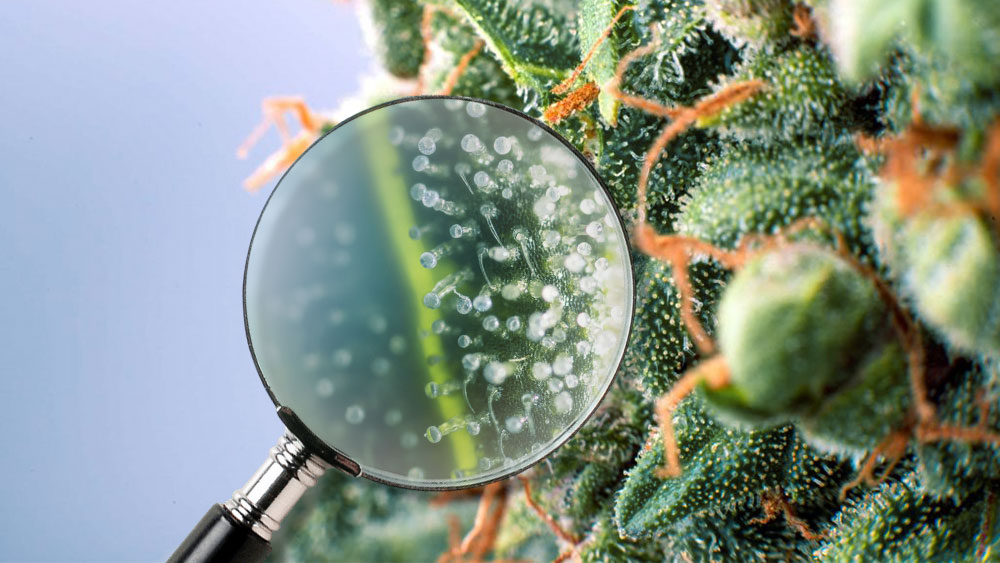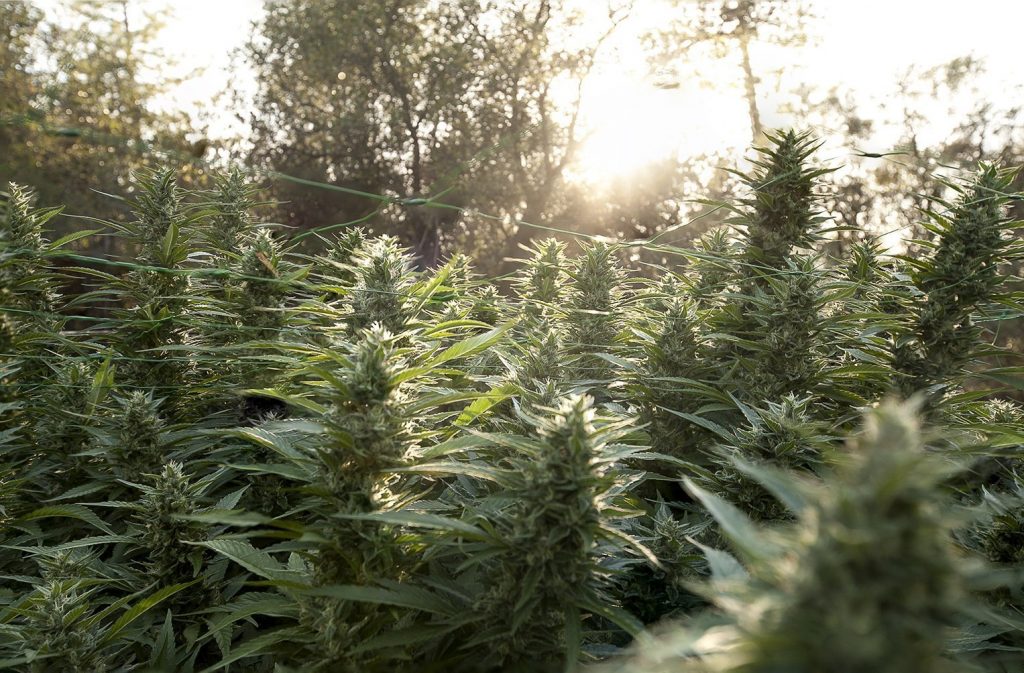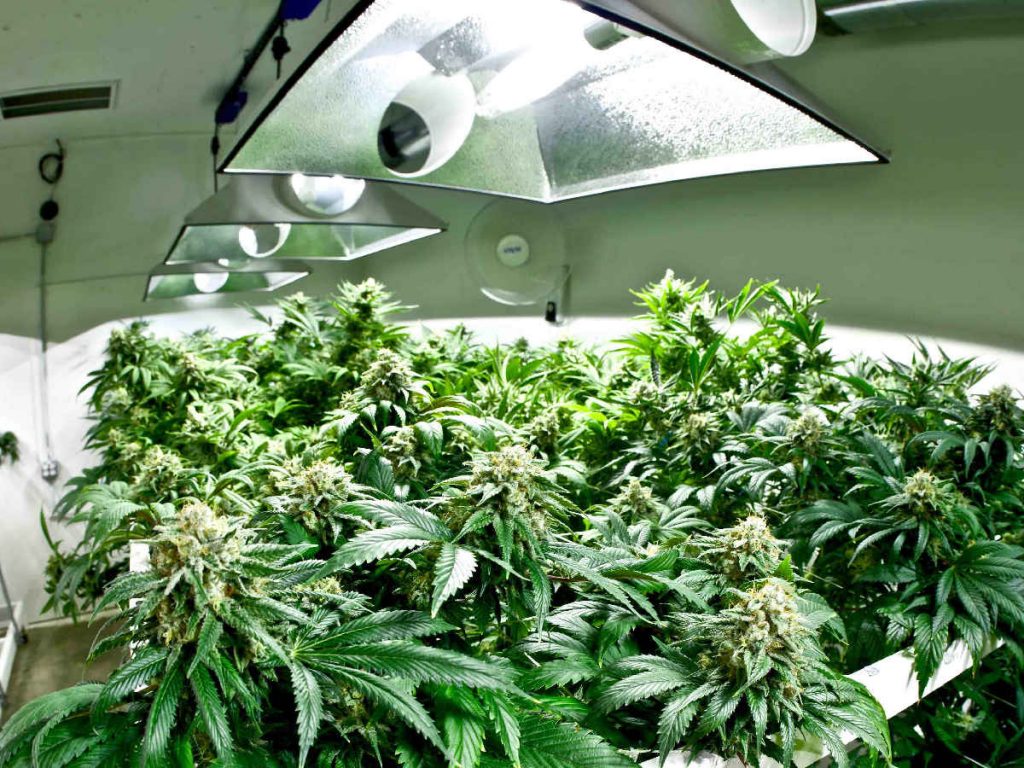News
How to harvest Cannabis Plants
Harvesting cannabis plants is an important step in the cultivation process, as it determines the potency and yield of the final product. There are several key factors to consider when harvesting cannabis plants, including the maturity of the buds, the trichome color, and the overall health of the plant.
Different gardener’s opinions on harvesting
When it comes to harvesting cannabis plants, different growers may have different methods for determining the best time to harvest. Some may rely on visual cues, such as the maturity of the buds and the color of the trichomes, while others may use more scientific methods, such as measuring the levels of THC and CBD in the buds.
Visual Cues
One method for determining when to harvest cannabis plants is to use visual cues. This may involve observing the maturity of the buds and looking for the presence of a thick coating of trichomes. The buds should be fully developed and swollen, with a thick coating of trichomes, which are the tiny, crystal-like hairs that cover the buds. A good way to check the maturity of the buds is to use a magnifying glass or microscope to examine the trichomes. The trichomes should be cloudy or opaque, indicating that the buds are ready for harvest.
The Color of the trichomes

Another method for determining when to harvest cannabis plants is to use the color of the trichomes as a guide. As the plant matures, the trichomes will change color from clear to cloudy, and then to amber. The ideal time to harvest the plant is when most of the trichomes have turned cloudy, with a small percentage of amber trichomes. This is because the cloudy trichomes contain the highest levels of THC, the primary psychoactive compound in cannabis, while the amber trichomes contain higher levels of CBD, which can provide a more relaxing and sedative effect.
THC and CBD Levels
A more scientific method for determining when to harvest cannabis plants is to measure the levels of THC and CBD in the buds using a testing kit. This can give growers a more accurate idea of the potency of their buds and help them to decide when to harvest. This method is more accurate but also more costly.
OTHERS
Another perspective is to rely on the experienced growers who have been cultivating cannabis for a long time. These growers often rely on their experience and intuition to determine when to harvest. They can tell when a plant is ready based on the look and smell of the buds, and the overall health of the plant.
Determining when to harvest cannabis plants can depend on a variety of factors, and different growers may have different methods for determining the best time to harvest. Some may rely on visual cues, such as the maturity of the buds and the color of the trichomes, while others may use more scientific methods, such as measuring the levels of THC and CBD in the buds. Experienced growers may rely on their own intuition and experience to determine when the plant is ready to harvest.
Outdoor Cannabis harvesting

Growing marijuana outdoors can offer a number of benefits compared to indoor cultivation, including lower costs and the ability to take advantage of natural sunlight. However, outdoor marijuana cultivation also comes with its own set of challenges, including weather conditions, pests, and the risk of detection.
One of the main advantages of outdoor marijuana cultivation is cost savings. Indoor cultivation requires a significant investment in equipment such as grow lights, fans, and ventilation systems, whereas outdoor cultivation only requires soil, seeds or clones, water, and basic gardening tools. Additionally, natural sunlight is free and can be more efficient than artificial light.
Another advantage of outdoor marijuana cultivation is the ability to take advantage of natural sunlight. This can result in healthier, more vigorously growing plants, as well as higher yields. Outdoor marijuana plants can also benefit from the natural changes in temperature and humidity, which can promote stronger root systems and more resilient plants.
However, outdoor marijuana cultivation also comes with its own set of challenges. Weather conditions can greatly affect the growth and development of marijuana plants, particularly extreme heat or cold, heavy rain or drought. Pests and diseases are also more prevalent outdoors, and can quickly damage or kill plants if not controlled. Additionally, there is a risk of detection, particularly if the plants are grown in a visible location or if they are not secured properly.
To mitigate these challenges, outdoor marijuana growers should choose a location that offers protection from harsh weather conditions, such as a greenhouse or a location near a natural windbreak. They should also be vigilant in monitoring their plants for pests and diseases and take appropriate measures to control them. They should also take steps to secure their plants and keep them out of sight to avoid detection.
outdoor marijuana cultivation offers many benefits, including lower costs and the ability to take advantage of natural sunlight. However, it also comes with its own set of challenges, including weather conditions, pests, and the risk of detection. To have a successful outdoor marijuana cultivation, growers need to carefully plan their location, be vigilant in monitoring their plants and take proper measures to secure them.
List of equipment
- Watering system: This can include a hose, watering can, or irrigation system, to ensure that the plants are getting the right amount of water. Drip irrigation systems are common for outdoor growing as they provide consistent and measured water supply.
- Garden tools: These include basic tools such as a shovel, rake, and hoe, which are used to prepare the soil and maintain the garden.
- Garden gloves: These are used to protect the hands while working in the garden.
- Fertilizer: These are used to provide the plants with the necessary nutrients for healthy growth and development. Organic fertilizers like compost or fish emulsion are popular choices.
- Pest control: This can include insecticides, fungicides, and other products to control pests and diseases that can affect the plants. Neem oil, Pyrethrum are some of the common organic pest control options.
- Trellis or stake: These are used to support the plants as they grow and to keep the buds off the ground.
- Pruning shears: These are used to prune and trim the plants, to promote healthy growth and increase yields.
- Rope or twine: These are used to tie the plants to the trellis or stake, or to tie branches together to create a more stable structure.
- Tarp or plastic sheeting: These are used to protect the plants from the elements, such as heavy rain or strong winds.
- Sunscreen or sunscreen clothing: These are used to protect the skin from sunburn while working in the garden.
Indoor Cannabis Harvesting

Indoor marijuana cultivation offers growers the ability to control the environment in which their plants are grown, which can lead to higher quality buds and more consistent yields. However, indoor cultivation also comes with its own set of challenges, such as the need for specialized equipment and the cost of electricity.
One of the main advantages of indoor marijuana cultivation is the ability to control the environment. Growers can adjust temperature, humidity, and light levels to optimize growth and development. This can lead to higher quality buds, as well as more consistent yields, since the plants are not subject to the unpredictable weather conditions of outdoor cultivation.
Indoor cultivation also provides growers with more privacy, security, and discretion. It allows them to grow their plants in a controlled and hidden environment, away from prying eyes and potential legal issues.
indoor marijuana cultivation also comes with its own set of challenges. One of the main challenges is the need for specialized equipment, such as grow lights, fans, and ventilation systems. These can be expensive to purchase and operate, and can also consume a significant amount of electricity. Additionally, indoor growers must also be careful in monitoring their plants for pests and diseases, as these can spread more quickly in a confined indoor space.
To mitigate these challenges, indoor marijuana growers should carefully research and choose energy-efficient equipment and grow techniques
List equipment
- Grow lights: These provide the necessary light for the plants to grow and thrive. High-intensity discharge (HID) lights, such as metal halide and high-pressure sodium lights, are popular choices for flowering and fruiting plants. LED grow lights, Fluence and Ceramic Metal Halide are also becoming more popular as they are energy efficient and emit a full spectrum of light.
- Reflective material: These help to increase the amount of light that reaches the plants, by reflecting light back onto the plants. Mylar, Foil or white paint are commonly used.
- Fans: These are used to circulate air and promote healthy growth. They also help to keep the plants cool and prevent heat buildup.
- Carbon filter: These are used to remove the strong smell of cannabis from the growing area.
- Thermometer and hygrometer: These are used to measure the temperature and humidity levels in the growing area, to ensure that the plants are being grown in optimal conditions.
- Timers: These are used to control the lights, fans, and other equipment, to ensure that the plants are getting the right amount of light, air, and other conditions.
- Watering system: This can be a simple watering can or a more complex irrigation system, to ensure that the plants are getting the right amount of water.
- Pots, soil or hydroponic system: These are used to grow the plants in. Pots can be made of plastic, fabric or even smart pots. Soil or hydroponic systems can be used to grow the plants in, depending on the grower’s preference and experience level.
- Nutrients: These are used to provide the plants with the necessary nutrients for healthy growth and development.
- Pest control: This can include insecticides, fungicides and other products to control pests and diseases that can affect the plants.
How long can you wait to harvest
Waiting too long to harvest cannabis plants can have a significant impact on the quality and potency of the buds. As the plants mature, the levels of THC (tetrahydrocannabinol) and other cannabinoids begin to decrease, while the levels of CBD (cannabidiol) and other non-psychoactive compounds increase. This can lead to buds that are less potent and less desirable for recreational or medical use.
Another issue that can arise from waiting too long to harvest is an increase in the amount of chlorophyll in the buds. Chlorophyll is the green pigmentation in plants that is responsible for photosynthesis. As the plant matures, chlorophyll levels increase, giving the buds a green, grassy taste and smell. This can negatively affect the overall taste and smell of the buds.
Another problem that can occur is the development of seeds in the buds, which can happen if the plants are allowed to grow for too long. This can greatly decrease the quality and yield of the buds, and can also make them less desirable for use.
It’s important to keep an eye on the maturity of your plants and harvest them at the right time to ensure the best quality buds. An easy way to tell when your plants are ready to harvest is by looking at the trichomes (the small, crystal-like structures on the buds) through a microscope. When the majority of the trichomes have turned from clear to milky white, it’s time to harvest.
the importance of strain selection before plantation
When it comes to starting a cannabis plantation, one of the most important decisions you’ll make is selecting the right strain of cannabis. The strain you choose can have a big impact on the success of your crop, so it’s essential to take your time and do your research. Here are a few things to consider when selecting a strain:
- THC and CBD levels: Different strains of cannabis have different levels of THC and CBD, which are the two main compounds in cannabis. THC is the compound responsible for the psychoactive effects of cannabis, while CBD is non-psychoactive and is used for medicinal purposes. It’s important to research the strains you’re interested in and choose one that has the desired THC and CBD levels for your operation.
- Growth patterns: Different strains of cannabis have different growth patterns. Some strains grow tall and lanky, while others are short and bushy. Research the growth patterns of the strains you’re interested in and select one that is well-suited to your growing conditions and desired outcome.
- Yields: Different strains of cannabis also have different yields. Some strains are known for producing large amounts of buds, while others are known for producing smaller yields. Research the yields of the strains you’re interested in and select one that has the desired yield for your operation.
- Climate and weather: Different strains of cannabis have different climatic requirements. Some strains can tolerate extreme weather conditions, while others are not well-suited to certain climates. Research the strains you’re interested in and select one that is well-suited to the climate and weather patterns in your area.
- Resistance to pests and diseases: Some strains are more resistant to pests and diseases than others. Research the strains you’re interested in and select one that is known for its resistance to pests and diseases.
By taking the time to research and carefully select the right strain, you can help ensure that your cannabis plantation is successful and profitable.
COnclusion
It’s a time to reap the benefits of all your hard work and care. Every gardener has their own perspective on when to harvest, but the key is to pay close attention to the plant, to the strain you choose, and to the timing. Whether you’re growing cannabis indoors or outdoors, the right equipment and proper precautions can make all the difference. And remember, before starting a cannabis plantation, do your research, consider all the factors, and choose the right strain for you. With a little bit of knowledge and care, you’ll be sure to have a bountiful and successful harvest.
Happy gardening!






















